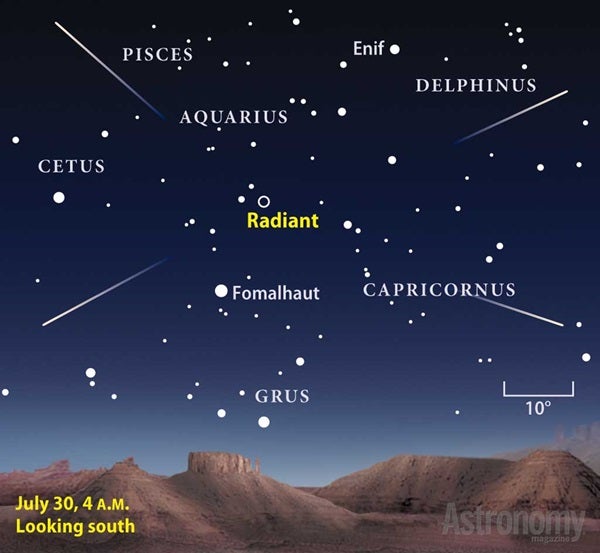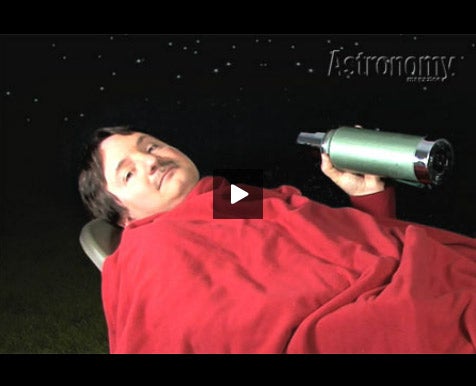Unfortunately, during the Delta Aquarids’ peak, the Moon — a barely waning crescent — rises around midnight and will wash out some of the dimmer “shooting stars.”
“If you can stay up late or get up early, try watching just before dawn for the best views,” said Astronomy magazine Senior Editor Richard Talcott. “In early August, just after the peak, you may catch an early streak or two from the Perseid meteor shower, and the Moon won’t be as bright.”
Meteors appear because motes of fast-moving dust collide with Earth’s atmosphere. The friction between these tiny particles and the atmosphere’s molecules cause the dust to vaporize and leave a trail of light in the sky. Meteor showers occur when Earth’s orbit brings it through a comet’s stream of debris — discarded dust and ice left that trace the comet’s orbit.
As Talcott said, “All other things being equal, the farther away from the radiant a meteor streaks, the longer its trail will be.”
Enjoy the endless summer nights of meteor-watching with some lemonade and a lawn chair.
Fast facts:
- Delta Aquarid meteors are not slow by anyone’s definition, crashing into the atmosphere at 91,700 mph (147,600 kilometers/hour), but their speed is moderate compared to the 158,800 mph (255,600 km/h) of November’s Leonids.
- The Southern Delta Aquarid shower occurs because Earth is passing through Comet 96P/Machholz’s debris.
- Video: How to observe meteor showers, with Michael E. Bakich, senior editor
- StarDome: Locate the shower’s radiant in Aquarius in your night sky with our interactive star chart.
- The Sky this Week: Get your Southern Delta Aquarid meteor shower info from a daily digest of celestial events coming soon to a sky near you.
- Sign up for our free weekly email newsletter.












